Music Streaming App Revenue and Usage Statistics 2022
Music streaming has its roots in the peer-to-peer file sharing industry. Napster, Limewire and BitTorrent were at the forefront of changing the way people thought about music, and while they only lasted a few years before being taken down for unauthorised use of copyright material, it moved the industry towards new forms of accessibility.
Apple’s iTunes store and iPod launched in 2001 and the success of the device was seen as a potential step forward from Napster, which had been forcibly closed down that same year, however, the internet was still rife with free music downloaders.
By the mid-2000s, Pandora and Spotify had both launched, which both tried to reshape the cost of music. Instead of paying for the song, Pandora and Spotify would pay a much smaller amount per stream to the record company.
This fundamentally changed how music is valued. Instead of sales, the emphasis was on repeated listens and getting a song in a popular playlist or radio station. The music industry shunned the new platforms at the start, with several artists blocking Spotify and Pandora from using their material.
YouTube also got its start in 2005 and by 2010 it was the most popular video service in the world, overtaking MTV and other channels as the premier place to watch music videos. Major music labels launched VEVO in 2009 as a way to control the distribution and revenue share of music videos on YouTube.
Even with the poor reception from the music industry, YouTube, Pandora and Spotify continued to grow in users. But it wouldn’t be until the mid-2010s that music streaming became the dominant revenue generator for music labels, surpassing physical and digital.
Apple Music launched in 2015, further verifying streaming as the future of digital music.
In 2021, music streaming is far ahead of other forms of music distribution, however this has led to some artists losing income and having to find new ways to stay relevant. For some, that means more tours, merchandise and other fan interactions.
We have collected data and statistics on the music streaming sector. Read on below to find out more.
Key Music Streaming App Statistics
- Music streaming apps generated $25.1 billion revenue in 2021, a 32% increase on the year prior
- Almost half of all music streaming app revenue was from the US
- Spotify is the most popular streaming service in terms of subscribers
- In terms of overall usage, YouTube is far ahead with 2.5 billion users
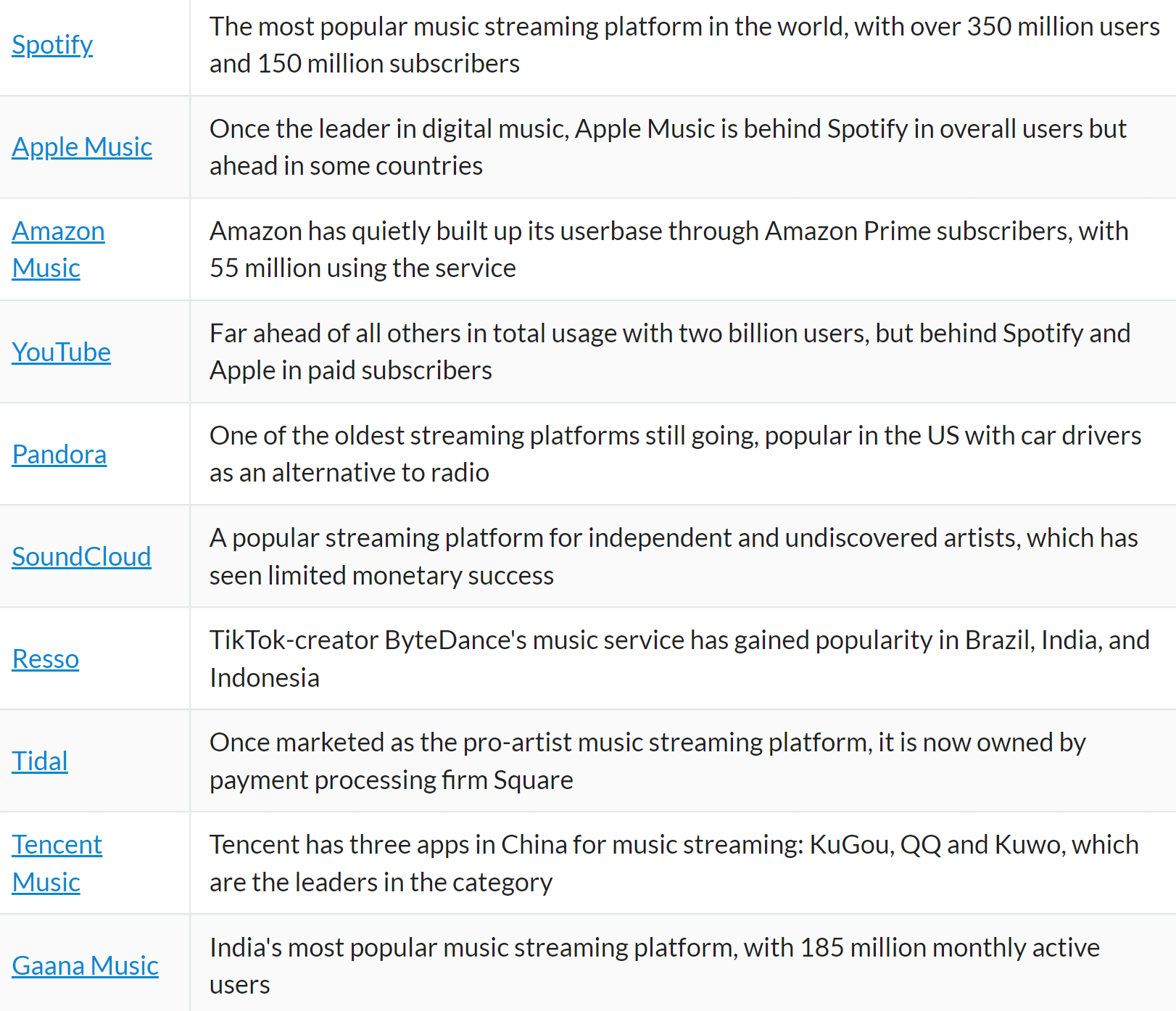
Music Streaming Revenue
Revenue from music streaming has increased every year since inception. From 2014, it has grew at an average rate of 43.9% and become the primary revenue source for most music labels.
Global music streaming annual revenue 2012 to 2021 ($bn)
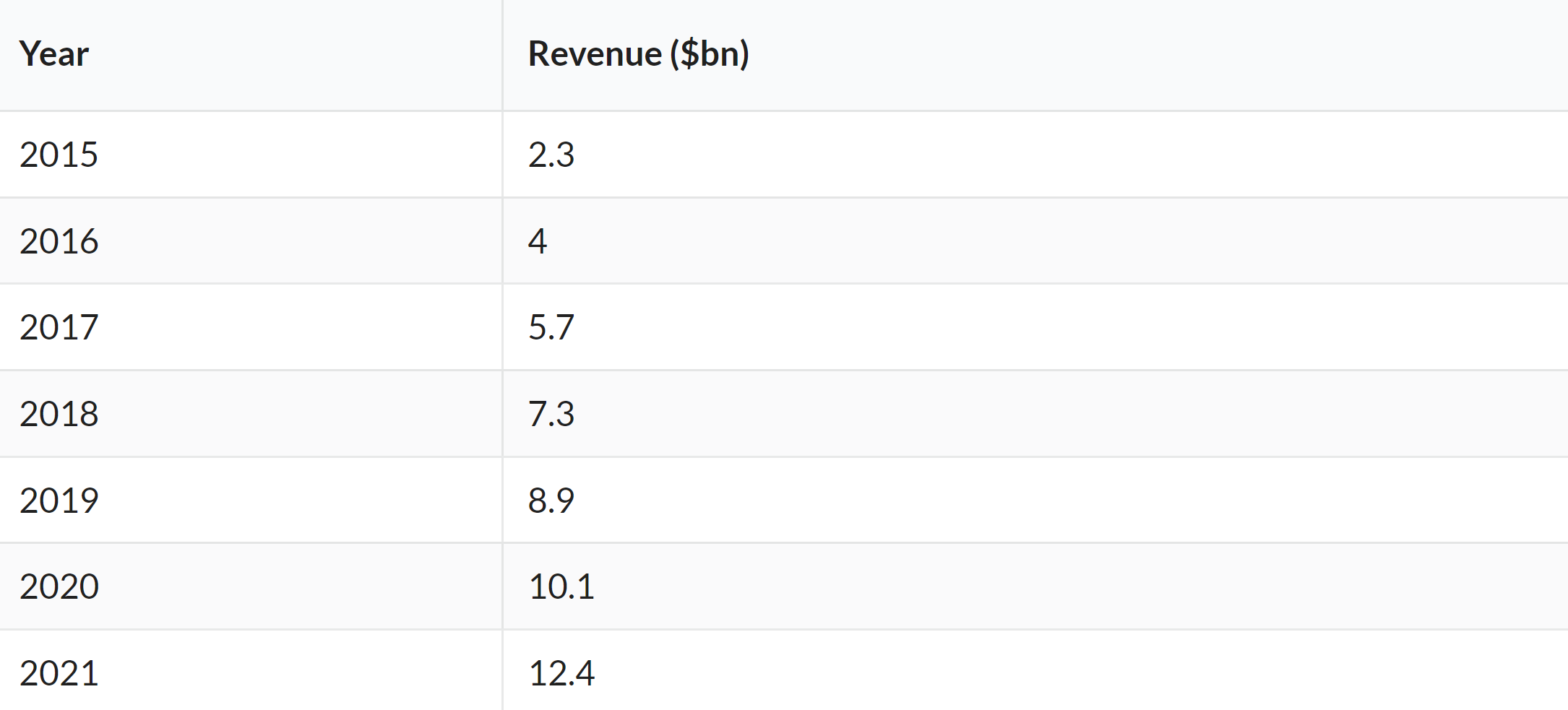
Music Streaming Income vs Other Formats
Music streaming is the dominant format in the US, with 83% of revenue coming from the format. Percentages are lower in Europe and Asia, although all countries are increasingly adopting streaming as their primary format for music listening.
Music streaming revenue in United States by format 2021 (%)
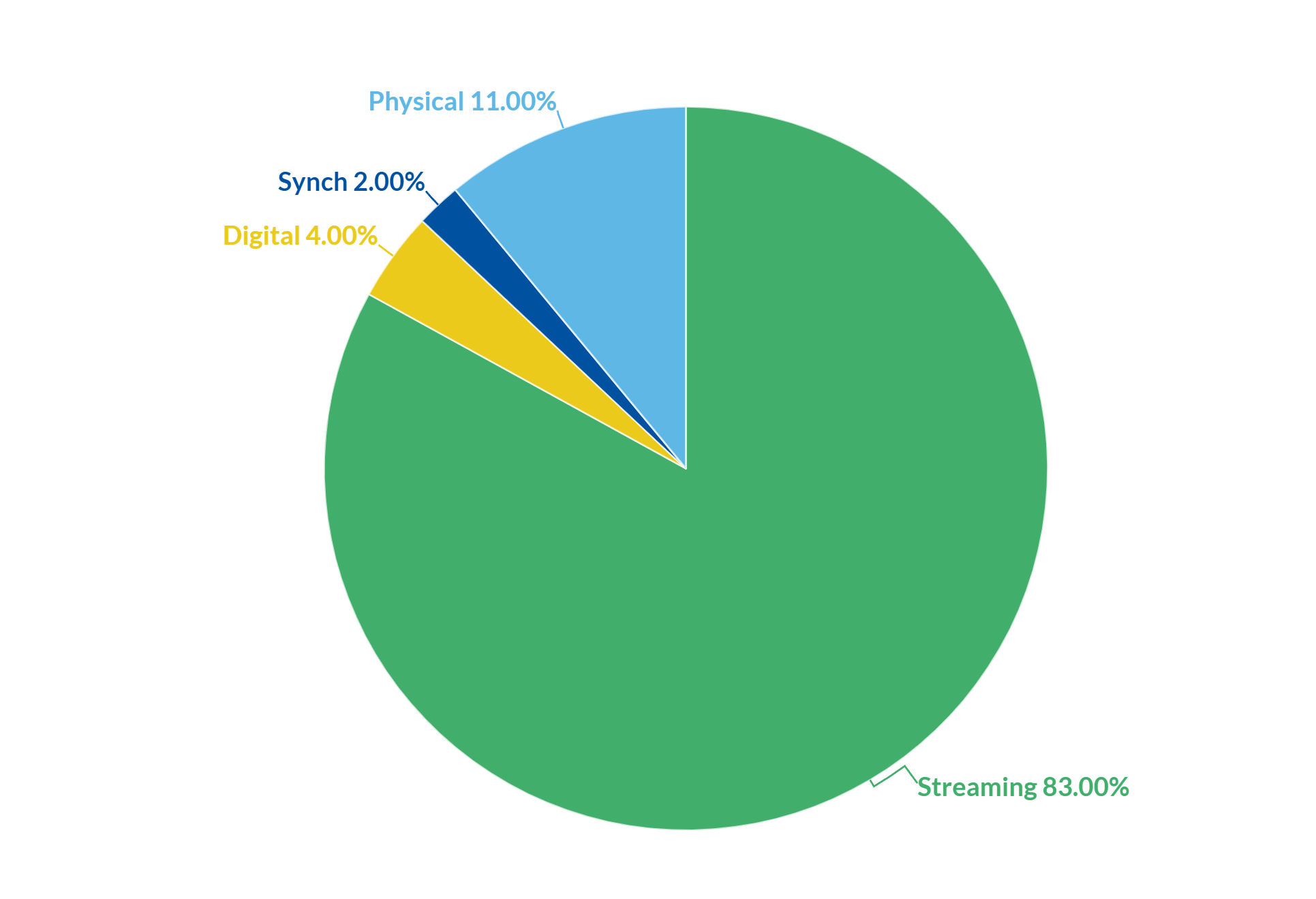
Music Streaming Marketshare
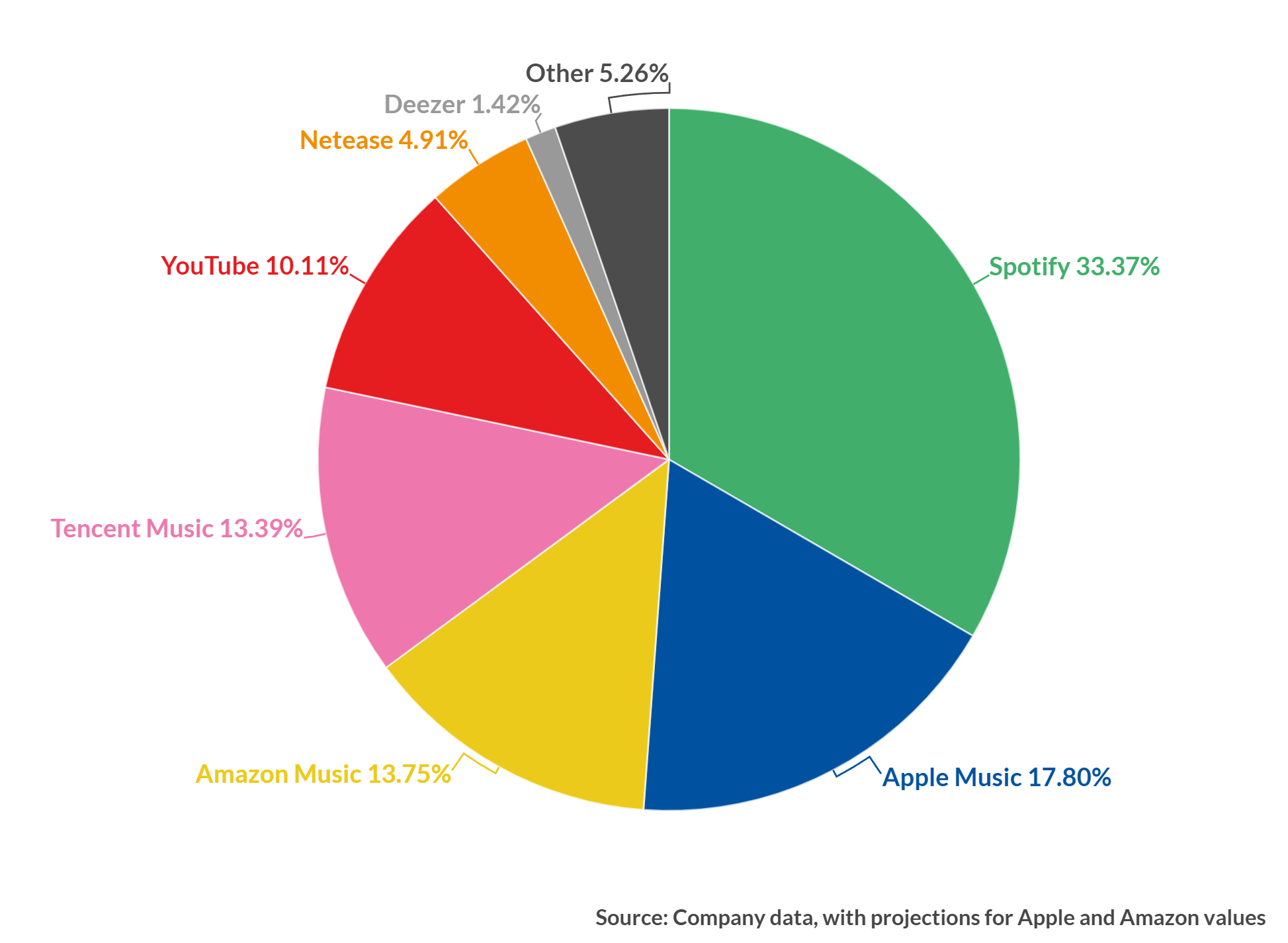
Music Streaming Subscribers by App
As one of the first music streaming platforms, Spotify had over 50 million subscribers before Apple had launched its own platform. It has kept this lead, although marketshare has declined as more services have launched.
Music streaming subscribers by app 2016 to 2021 (mm)
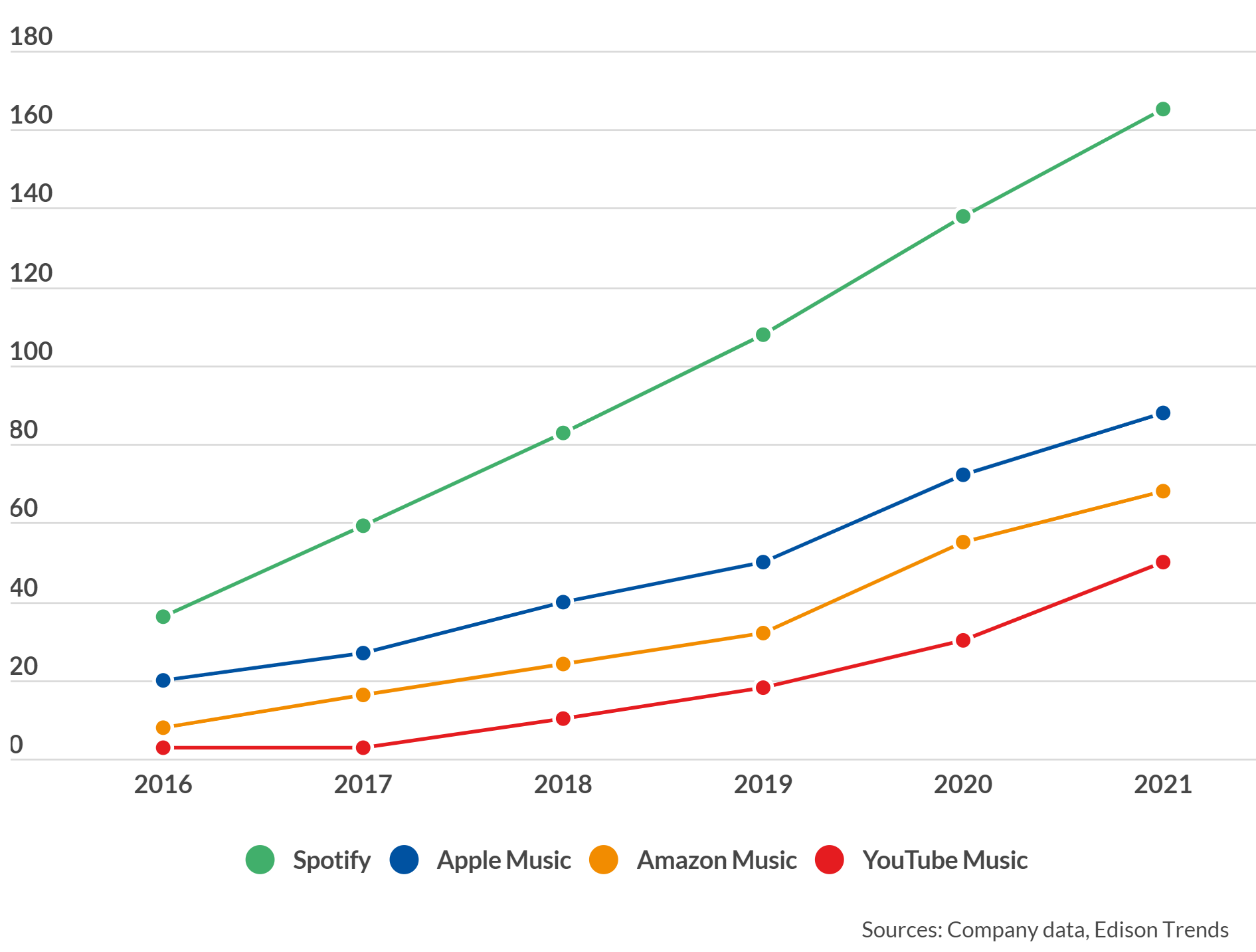
Music Streaming Users by App
In terms of usage, YouTube is far ahead of other platforms, with two billion active users who listen to music. Tencent’s various music platforms in China have over 800 million users, while Spotify free and paid users total 381 million.
Music streaming users by app 2021 (mm)
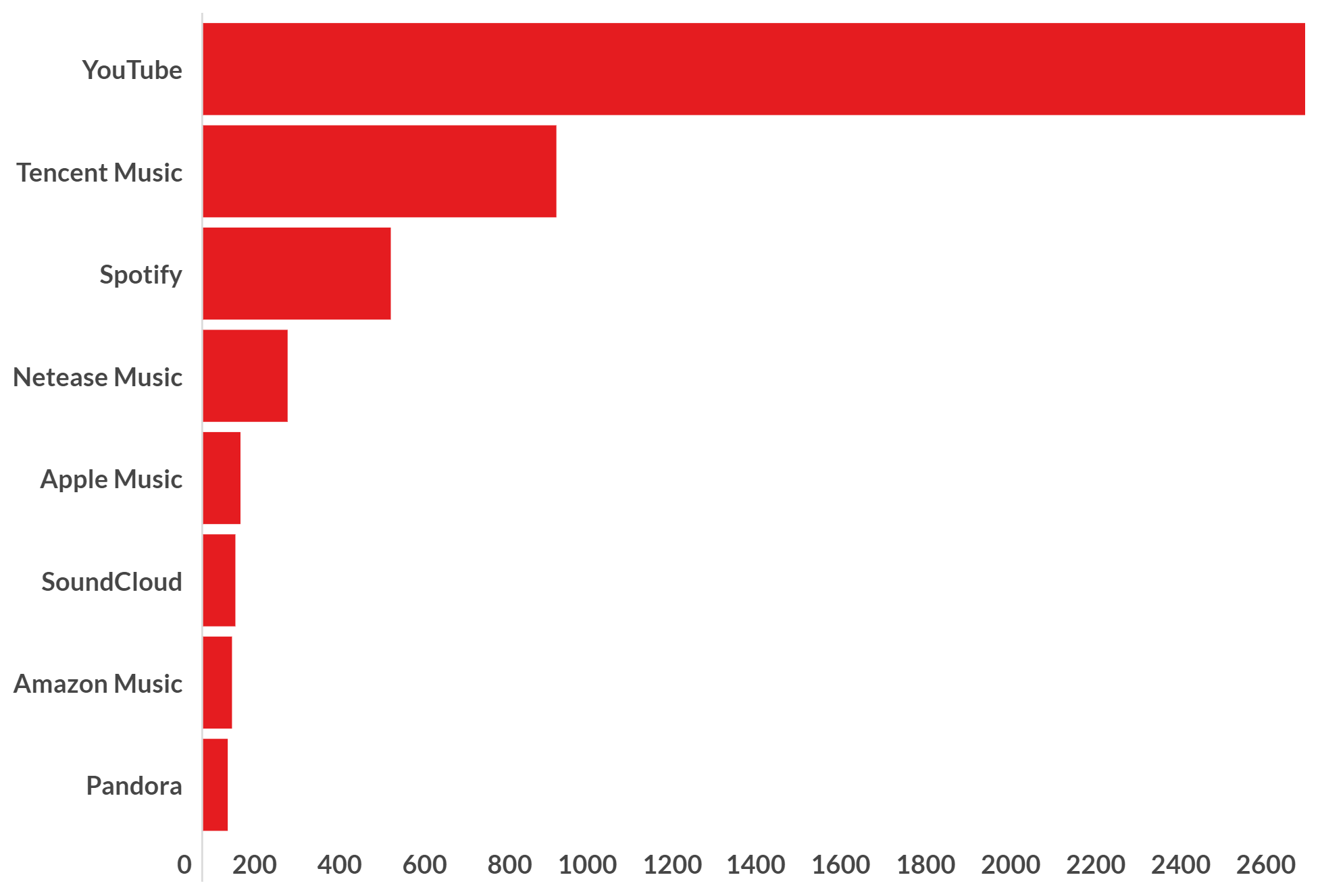
Link to article: https://www.businessofapps.com/data/music-streaming-market/

